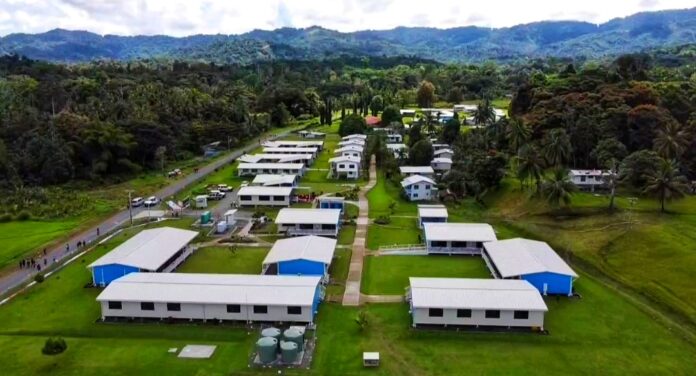By MICHELLE AUAMOROMORO
THE School of Excellence (SoE) concept in the Yangoru-Saussia District had proved workable when over 20 students from the district were sent into universities last years after years of delivering less than 10.
Yangoru-Saussia MP Richard Maru said this during the officially opening of the Yangoru Saussia SoE on Thursday, May 5.
“Out of our 7 high schools, the district basically produces one thousand grade 12 students.
“Out of the one thousand students, we were sending less than 10 students to the universities from our district school education system; which means less than 1% of our kids made it to universities.
“This was a very poor result by any standard,” he said.
These results prompted Maru to come up with a new strategy which was supported by the former Australian High Commissioner Bruce Davis.
“I thank that great man for the foresight and the vision to partner my dream to change the course of Yangoru-Saussia by coming up with the SoE concept, initially as a pilot for our district and subject to success we wanted to roll this scheme to all the rural districts of Papua New Guinea (PNG) where the academic results are very poor just like Yangoru-Saussia had been,” said Maru.
The Australian Government, under the PNGAus partnership stepped in and built three new classrooms, a computer lab, three science labs, a library, storage rooms, two new dormitories (to accommodate 60 males and 60 females) and teachers’ houses for the Yangoru Saussia SoE.
“Thank you Australian government for funding this K18 million state of the art facility; this is just as good as any high school facility in Australia,” said Maru.
Deputy Australian High Commissioner Joanne Loundes said the Australian Government was proud to work in partnership with PNG to help achieve the better education outcomes that it seeks.
“For Australia, education has always been an extremely high priority for us; not just education but quality and accessible education that should be available for all young people across Papua New Guinea, including those here (in Yangoru-Saussia),” said Loundes.
“These facilities are not only going to create more reliable and comfortable learning environment for the students and the teachers but it is also going to expand the learning opportunities for students,” she said.
The SoE is currently under the Yangoru Secondary School (YSS) but it only takes in top science students from the district while the social science students attend the secondary school.
From the total of 31 students at YSS last year, 21 were accepted into universities; 14 from the SoE (pioneer grade 12 students) and 7 from the secondary school.
This was the first time, since its establishment, for YSS to deliver more than 10 students into universities.
“This was a 200% improvement,” said Maru.
“We have proven that it (the SoE) can work; it can deliver the results so we can only improve from here,” he said.
Seeing the results brought by the SoE concept, Maru said they (the DDA) is now focusing on securing funding for phase two of the SoE which is to build the School of Humanities.
“We want to build the school of humanities which can enroll 120 students,” said Maru.
“We want to do that in the next three years and we are hoping and praying that the Australian Government will complete what we started together,” he said.
Maru also said that the work to build a new high school at Yangoru would begin this year so upon the establishment of the School of Humanities in the district’s SoE, YSS would then be Yangoru Saussia National High School.
That means only grades 11 and 12 students would be getting into that school so the new high school that would be built would take in grade 9 and 10 students.
“So, in the future, instead of sending five students to universities, Yangoru-Saussia would send over 100. If Port Moresby National High School can do it then we can too,” said Maru.


